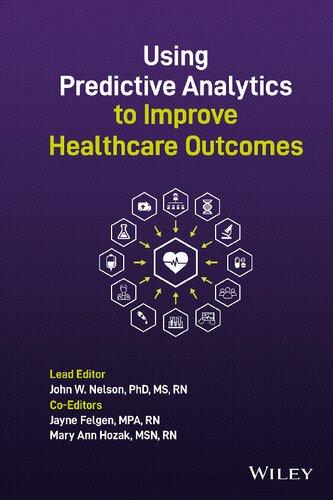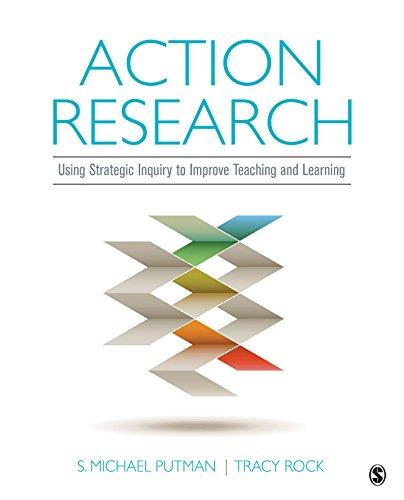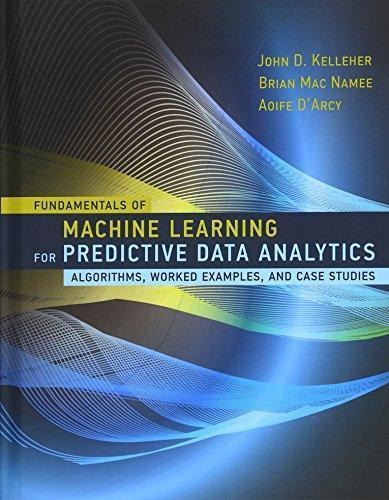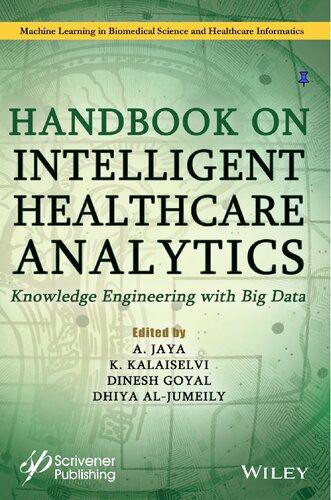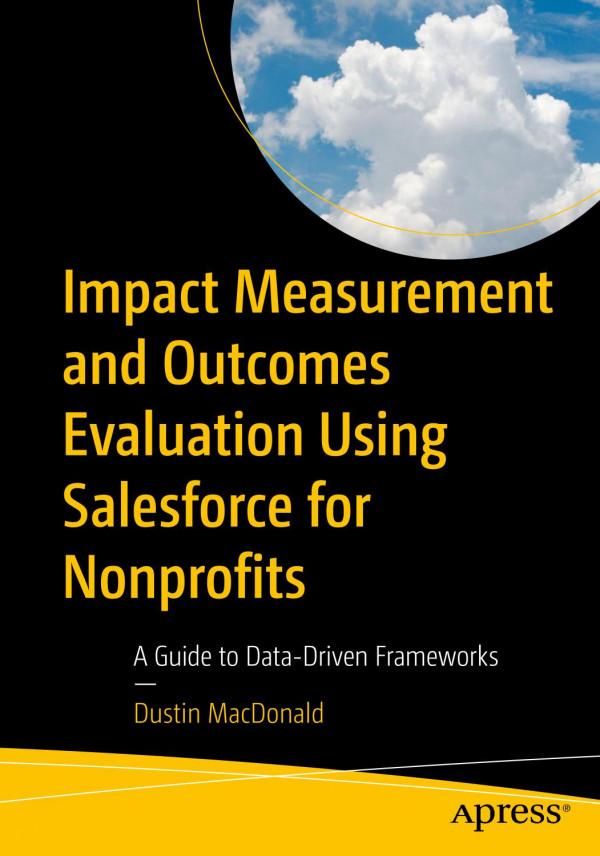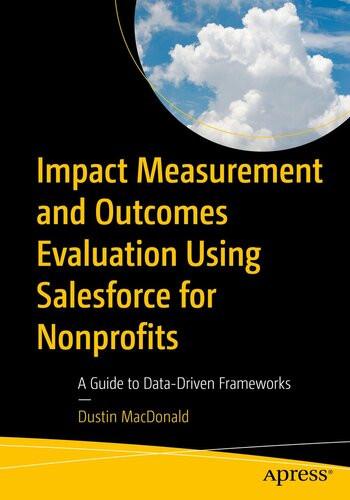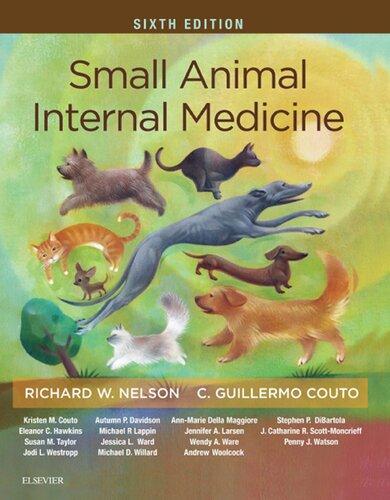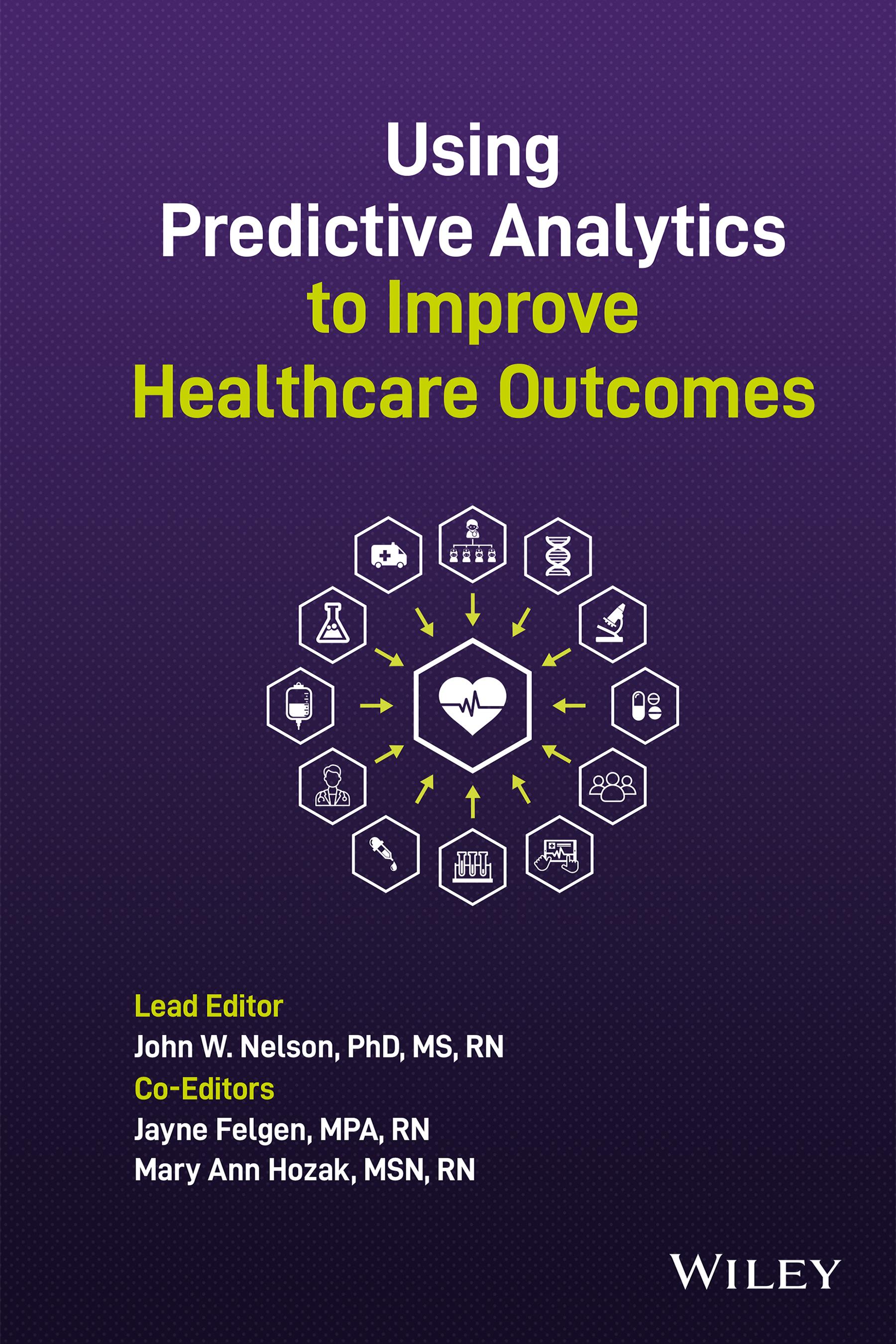Using Predictive Analytics to Improve Healthcare Outcomes
Edited by John W. Nelson
Healthcare Environment
Jayne Felgen
Creative Health Care Management
Mary Ann Hozak
St. Joseph’s Health
This edition first published 2021 © 2021 John Wiley & Sons, Inc.
All rights reserved. No part of this publication may be reproduced, stored in a retrieval system, or transmitted, in any form or by any means, electronic, mechanical, photocopying, recording or otherwise, except as permitted by law. Advice on how to obtain permission to reuse material from this title is available at http://www.wiley.com/go/permissions.
The right of John W. Nelson, Jayne Felgen, and Mary Ann Hozak to be identified as the authors of the editorial material in this work has been asserted in accordance with law.
Registered Office
John Wiley & Sons, Inc., 111 River Street, Hoboken, NJ 07030, USA
Editorial Office
111 River Street, Hoboken, NJ 07030, USA
For details of our global editorial offices, customer services, and more information about Wiley products visit us at www.wiley.com.
Wiley also publishes its books in a variety of electronic formats and by print‐on‐demand. Some content that appears in standard print versions of this book may not be available in other formats.
Limit of Liability/Disclaimer of Warranty
The contents of this work are intended to further general scientific research, understanding, and discussion only and are not intended and should not be relied upon as recommending or promoting scientific method, diagnosis, or treatment by physicians for any particular patient. In view of ongoing research, equipment modifications, changes in governmental regulations, and the constant flow of information relating to the use of medicines, equipment, and devices, the reader is urged to review and evaluate the information provided in the package insert or instructions for each medicine, equipment, or device for, among other things, any changes in the instructions or indication of usage and for added warnings and precautions. While the publisher and authors have used their best efforts in preparing this work, they make no representations or warranties with respect to the accuracy or completeness of the contents of this work and specifically disclaim all warranties, including without limitation any implied warranties of merchantability or fitness for a particular purpose. No warranty may be created or extended by sales representatives, written sales materials or promotional statements for this work. The fact that an organization, website, or product is referred to in this work as a citation and/or potential source of further information does not mean that the publisher and authors endorse the information or services the organization, website, or product may provide or recommendations it may make. This work is sold with the understanding that the publisher is not engaged in rendering professional services. The advice and strategies contained herein may not be suitable for your situation. You should consult with a specialist where appropriate. Further, readers should be aware that websites listed in this work may have changed or disappeared between when this work was written and when it is read. Neither the publisher nor authors shall be liable for any loss of profit or any other commercial damages, including but not limited to special, incidental, consequential, or other damages.
Library of Congress
Cataloging‐in‐Publication data applied for
ISBN 978‐1‐119‐74775‐8 (hardback)
Cover Image: © Kaikoro/Adobe Stock (adapted by Healthcare Environment)
Cover Design by Wiley
Set in 9.5/12.5pt STIX Two Text by Straive, Pondicherry, India
This book is dedicated to the memory of John Lancaster, MBE, who died on June 20, 2020. A dedicated nurse, John felt it vital to capture the importance of caring in a scientific way. He was delighted to have been involved in the research described in this book. John will be fondly remembered by family, friends, colleagues, and patients for his humor, kindness, and compassion, as well as the admirable way he lived with cancer, facing death with a dignity sustained by the Catholic faith that was so important to him.
Contents
Contributors xi
Foreword xv
Preface: Bringing the Science of Winning to Healthcare xvii List of Acronyms xix
Acknowledgments xxv
Section One Data, Theory, Operations, and Leadership 1
1 Using Predictive Analytics to Move from Reactive to Proactive Management of Outcomes 3
John W. Nelson
2 Advancing a New Paradigm of Caring Theory 19 John W. Nelson and Jayne Felgen
3 Cultivating a Better Data Process for More Relevant Operational Insight 33 Mary Ann Hozak
4 Leadership for Improved Healthcare Outcomes 43 Linda Valentino and Mary Ann Hozak
Section Two Analytics in Action 53
5 Using Predictive Analytics to Reduce Patient Falls 55 Tara Nichols, Lance Podsiad, Josephine Sclafani Wahl, and John W. Nelson
6 Using the Profile of Caring® to Improve Safety Outcomes 67
John W. Nelson and Kenneth Oja
7 Forecasting Patient Experience: Enhanced Insight Beyond HCAHPS Scores 83
Mary Ann Hozak and John W. Nelson
8 Analyzing a Hospital-Based Palliative Care Program to Reduce Length of Stay 93
Kate Aberger, Anna Trtchounian, Inge DiPasquale, and John W. Nelson
9 Determining Profiles of Risk to Reduce Early Readmissions Due to Heart Failure 103
Mary Ann Hozak, Melissa D’Mello, and John W. Nelson
10 Measuring What Matters in a Multi-Institutional Healthcare System 125
Kay Takes, Patricia Thomas, Gay Landstrom, and John W. Nelson
11 Pause and Flow: Using Physics to Improve the Efficiency of Workflow 135
Jacklyn Whitaker, Benson Kahiu, Marissa Manhart, Mary Ann Hozak, and John W. Nelson
12 Lessons Learned While Pursuing CLABSI Reduction 153
Ana Esteban, Sebin Vadasserril, Marissa Manhart, Mary Ann Hozak, and John W. Nelson Section Three Refining Theories to Improve Measurement 169
13 Theory and Model Development to Address Pain Relief by Improving Comfort 171
Tara Nichols and John W. Nelson
14 Theory and Model Development to Improve Recovery from Opioid Use Disorder 183
Alicia House, Kary Gillenwaters, Tara Nichols, Rebecca Smith, and John W. Nelson
Section Four International Models to Study Constructs Globally 197
15 Launching an International Trajectory of Research in Nurse Job Satisfaction, Starting in Jamaica 199
John W. Nelson and Pauline Anderson-Johnson
16 Testing an International Model of Nurse Job Satisfaction to Support the Quadruple Aim 217
John W. Nelson, Patricia Thomas, Dawna Cato, Sebahat Gözüm, Kenneth Oja, Sally Dampier, Dawna Maria Perry, Karen Poole, Alba Barros, Lidia Guandalini, Ayla Kaya, Michal Itzhaki, Irit Gantz, Theresa Williamson, and Dominika Vrbnjak
17 Developing a Customized Instrument to Measure Caring and Quality in Western Scotland 237
Theresa Williamson, Susan Smith, Jacqueline Brown, and John W. Nelson
18 Measuring the Effectiveness of a Care Delivery Model in Western Scotland 259
Theresa Williamson, Susan Smith, Jacqueline Brown, and John W. Nelson
Epilogue: Imagining What Is Possible 287
Appendix 291
References 409
Index 427
Contributors
Kate Aberger
Medical Director
Division of Palliative Care and Geriatric Medicine
St. Joseph’s Health
Paterson, NJ, US
Pauline Anderson-Johnson Lecturer
University West Indies School of Nursing
Mona, Jamaica
Alba Barros
Professor
Federal University São Paulo – Escola
Paulista de Enfermagem São Paulo, Brazil
Jacqueline Brown Clinical Educator
Golden Jubilee National Hospital
Clydebank, Scotland
Dawna Cato Chief Executive Officer
Arizona Nurses Association
Mesa, AZ, US
Sally Dampier Professor
Confederation College Thunder Bay, Ontario, Canada
Inge DiPasquale Manager
Division of Palliative Care and Geriatric Medicine
St. Joseph’s Health Paterson, NJ, US
Melissa D’Mello Congestive Heart Failure Coordinator
St. Joseph’s Health Paterson, NJ, US
Ana Esteban
Associate Director Quality Regulatory Compliance
Columbia Doctors – The Faculty Practice Organization of Columbia
University Irving Medical Center New York, NY, US
Jayne Felgen
President Emeritus and Consultant
Creative Health Care Management
Minneapolis, MN, US
Contributors
Irit Gantz
Coordinator
Woman-Health Division School of Nursing
Meir Hospital
Kfar-Saba, Israel
Kary Gillenwaters
Chief Executive Officer
Solidago Ventures and Consulting Elk River, MN, US
Sebahat Gözüm
Dean, School of Nursing Professor, Department of Public Health Nursing
Akdeniz University Antalya, Turkey
Lidia Guandalini
Cardiology Nurse
Federal University São Paulo – Escola
Paulista de Enfermagem
São Paulo, Brazil
Alicia House
Executive Director
Steve Rummler Hope Network Minneapolis, MN, US
Mary Ann Hozak
Administrative Director Department of Cardiology
St. Joseph’s Health Paterson, NJ, US
Michal Itzhaki
Senior Lecturer
Department of Nursing
Tel Aviv University
Tel Aviv, Israel
Benson Kahiu
Nurse Manager
Mount Sinai Health East Orange, NJ, US
Ayla Kaya
Research Assistant Director
Pediatric Nursing
Akdeniz University
Antalya, Turkey
Gay L. Landstrom
Senior Vice President and Chief
Nursing Officer
Trinity Health Livonia, MI, US
Marissa Manhart
Performance, Safety, and Improvement Coordinator
St. Joseph’s Health Paterson, NJ, US
John W. Nelson
Chief Executive Officer
Healthcare Environment
St. Paul, MN, US
Tara Nichols
Chief Executive Officer and Clinician
Maters of Comfort Mason City, IA, US
Kenneth Oja
Research Scientist
Denver Health
Assistant Professor
University of Colorado Denver, Colorado, US
Dawna Maria Perry
Chief Nursing Officer
Thunder Bay Regional Health Science Center
Thunder Bay, Ontario, Canada
Lance Podsiad
Manager
Helios Epic Nurse Manager
Henry Ford Health System
Detroit, Michigan, US
Karen Poole
Associate Professor
Lakehead University School of Nursing
Thunder Bay, Ontario, Canada
Rebecca Smith Writer/Editor Minneapolis, MN, US
Susan Smith
Chief Executive Officer
Choice Dynamic International Leeds, England
Kay Takes President
Eastern Iowa Region of MercyOne Dubuque, IA, US
Patricia Thomas
Manager – Associate Dean
Nursing Faculty Affairs
Wayne State University College of Nursing Detroit, MI, US
Anna Trtchounian
Emergency Medicine Resident
Good Samaritan Hospital Medical Center
West Islip, Long Island, NY, US
Sebin Vadasserril Manager
Innovative Nursing Practice and Quality
St. Joseph’s Health Paterson, NJ, US
Linda Valentino Vice President
Nursing Operations
Mount Sinai Hospital New York, NY, US
Dominika Vrbnjak Assistant Professor University of Maribor Faculty of Health Sciences Maribor, Slovenia
Josephine (Jo) Sclafani Wahl
Associate Director BRG/Prism MI, US
Jacklyn Whitaker Nurse Manager
St. Joseph’s Health Paterson, NJ, US
Theresa Williamson
Associate Nurse Director
Golden Jubilee National Hospital Clydebank, Scotland
Foreword
John W. Nelson and his colleagues are to be congratulated for creating this distinctive book. A very special feature of the book is the use of predictive analytics to explain, amplify, and validate caring theory. All too often, publications focusing on methods such as predictive analytics ignore the theoretical frameworks that guide the collection of data to which analytics are applied. The reader is then left with the thought, “Perhaps interesting results, but so what?” This book provides the answer to “so what?” by presenting the very interesting results, within the contexts of caring theory, specifically Relation-Based Care®, the Caring Behaviors Assurance System©, and Watson’s Theory of Transpersonal Caring.
The book’s content emphasizes quality improvement, which might be considered the most appropriate application of predictive analytics in healthcare. Determining how, when, and why to improve the quality of healthcare, as a way to improve individual-level and organization-level outcomes, is a major challenge for all healthcare team members and researchers. Theory-based predictive analytics is an innovative approach to meeting this challenge.
A challenge for the authors of the chapters of this book, and for its readers, is to determine the most appropriate place for theory in the triad of data, theory, and operations. Given my passion for the primacy of theory, I recommend that the starting point be theory, which determines what data is to be collected and how the data can be applied to operations.
The case studies that make up the several chapters of Sections Two and Four of this book, the contents of which are as interesting as they are informative, help readers to appreciate the value of theory-based predictive analytics. The case studies, which range from individual-level problems to department-level problems to health system-level problems, underscore the wide reach of theory-based predictive analytics.
I contend that the ultimate challenge of predictive analytics will be to carry out the theoretical and empirical work needed to test the book editors’ claim, in the Preface of this book, that the same formulas helping people in the trucking and
mining industries to create profiles of risk that enable them to prevent unwanted outcomes before they happen, can be applied successfully to improve healthcare outcomes. Meeting this challenge will undoubtedly extend the knowledge of our discipline, which many of us now refer to as nursology (see https://nursology.net).
Jacqueline Fawcett, RN, PhD, ScD (hon), FAAN, ANEF Professor, Department of Nursing, University of Massachusetts Boston Management Team Facilitator, https://nursology.net
Preface: Bringing the Science of Winning to Healthcare
John W. Nelson
A few years before the publication of this book, I attended an international mathematics conference for research in simulation studies and predictive analytics. Out of more than 300 attendees, there was only one other attendee from healthcare. For three days there were presentations by researchers from the fields of logistics (trucking) and mining, reviewing how they used predictive analytics and simulation to proactively manage outcomes related to productivity and company output. Surely, I thought, the same kinds of mathematical formulas presented by the truckers and miners could be used in healthcare to move us from reactive use of data to a proactive approach.
Currently, hospitals evaluate outcomes related to falls and infections using hindsight-based analytics such as case studies, root cause analyses, and regression analyses, using retrospective data to understand why these outcomes occurred. Once the underlying causes for the outcomes are identified, the organization creates action plans for improving the outcomes. The problem with this process is that retrospective data provides only hindsight, which does nothing to create a profile of current or future risk. Healthcare organizations typically stop short of supporting prospective management of the data, which would allow for the collection of meaningful data about real-life trends and what is actually happening in practice right now. Conversely, the truckers and miners at the conference showed how predictive analytics can be used to study risk for the purpose of managing unwanted outcomes before they occur. Since I am both a data scientist and a nurse, I could see clearly that the formulas from the math conference could apply to healthcare; all you would have to do is specify the models.
This book is about how analytics—mostly predictive analytics—can be used to improve outcomes in healthcare. This book also reveals how good data, derived from good theory, good measurement instruments, and good data collection processes has provided actionable information about the patient, the caregiver, and the operations of care, which have in turn inspired structure and process
Preface: Bringing the Science of Winning to Healthcare
changes that saved millions of dollars while improving the experience of both patients and providers.
Organizations that have embraced predictive analytics as a central part of operational refinement include Amazon, IBM (Bates, Suchi, Ohno-Machado, Shah, & Escobar 2014), Harrah’s casino, Capital One, and the Boston Red Sox (Davenport 2006). In his 2004 book (and the 2011 film), Moneyball, Michael Lewis, documents an example of how in 2002 the Oakland A’s professional baseball team, which had the lowest payroll in baseball, somehow managed to win the most games. This paradox of winning the most games despite having the skimpiest budget in the league was due to an assistant general manager who used a baseball-specific version of predictive analytics called sabermetrics to examine what combination of possible recruits would reach first base most reliably, and would therefore result in the team winning the most games. These recruits were not the most obvious players—in fact, they were not considered by almost anyone to be the best players. It was only predictive analytics that made them visible as the right players to comprise this winning team.
If predictive analytics can help a team win more games, why couldn’t they help patients heal faster? Why couldn’t they help clinicians take better care of themselves? Why couldn’t predictive analytics be used to improve every outcome in healthcare?
As a data scientist and operations analyst, it is my job to present data to healthcare leaders and staff members in a way that allows them to easily understand the data. Therefore, it is the job of this book to help people in healthcare understand how to use data in the most meaningful, relevant ways possible, in order to identify the smartest possible operational improvements.
For decades, the three editors of this book have been conducting research to measure some of the most elusive aspects of caring. This book provides instructions and examples of how to develop models that are specified to the outcomes that matter most to you, thereby setting you up to use predictive analytics to definitively identify the most promising operational changes your unit or department can make, before you set out to change practice.
List of Acronyms
A&O Alert and oriented
ACCF American College of Cardiology Foundation
ACE Angiotensin-converting enzyme
ACEI Angiotensin-converting enzyme inhibitor
AGFI Adjusted goodness of fit index
AHA American Heart Association
AMI Acute myocardial infarction
ANEF Academy of Nursing Education Fellow
ANOVA Analysis of variance
APN Advanced practice nurse
ARB Angiotensin receptor blockers
ARNI Angiotensin receptor-neprilysin inhibitor
ASAM American Society of Addiction Medicine
Auto-Falls RAS Automated Falls Risk Assessment System
BNP Brain natriuretic peptide
BSN Bachelor of science in nursing (degree)
BUN Blood urea nitrogen
CAC Coronary artery calcium
CAD Coronary artery disease
CARICOM Caribbean Community (a policy-making body)
CAT Caring Assessment Tool
CBAS Caring Behaviors Assurance System©
CDI Choice Dynamic International
CFI Comparative fit index
CCU Coronary care unit
CDC Centers for Disease Control
CEO Chief executive officer
CES Caring Efficacy Scale
CFS Caring Factor Survey©
List of Acronyms xx
CFS-CM Caring Factor Survey – Caring of Manager
CFS-CS Caring Factor Survey – Caring for Self
CFS-CPV Caring Factor Survey – Care Provider Version
CFS-HCAHPS Caring Factor Survey – hospital consumer assessment of healthcare providers and systems (a 15-item patient/ provider survey)
CKD Chronic kidney disease
CL Central line
CLABSI Central line-associated bloodstream infection
CMS Centers for Medicare and Medicaid Services
CNA Certified nursing assistant
CNO Chief nursing officer
CNS Clinical nurse specialist
COPD Chronic obstructive pulmonary disease
CPM Clinical Practice Model
CPR Cardiopulmonary resuscitation
CPS Caring Professional Scale
CRT Cardiac resynchronization therapy
CRT-D Cardiac resynchronization therapy defibrillator
CRT-P Cardiac resynchronization therapy pacemaker
CVA Cerebrovascular accident
CQI Continuous quality improvement
CVC Central venous catheter
CHCM Creative Health Care Management®
DNP Doctor of nursing practice
DNR Do not resuscitate
DNR-B Allows aggressive care, but not to the point of cardiopulmonary resuscitation
DVT Deep vein thrombosis
ED Emergency department
EF Ejection fraction
EFA Exploratory factor analysis
EKG Electrocardiogram
EKG QRS A segment of the EKG tracing
ELNEC End-of-Life Nursing Education Consortium
EMR Electronic medical record
ESC European Society of Cardiology
FAAN Fellow American Academy of Nursing
FTE Full-time employee
GFR Glomerular filtration rate
List of Acronyms
GLM General linear model
GPU General patient-care unit
GWTG Get With The Guidelines (measurement tool)
HAI Hospital-acquired infection
HCA Healing Compassion Assessment
HCAHPS Hospital Consumer Assessment of Healthcare Providers and Systems
HEE Health Education of England
HES Healthcare Environment Survey (measurement instrument)
HF Heart failure
HMO Health maintenance organization
ICD Implantable cardioverter defibrillator
ICU Intensive care unit
IRB Institutional review board
IV Intravenous or information value
I2E2 Inspiration, infrastructure, education and evidence
IOM Institute of Medicine
KMO Kaiser–Myer–Olkin (mathematical tool)
LOS Length of stay
LCSW Licensed clinical social worker
LVN Licensed vocational nurse
LVSD Left ventricle systolic dysfunction
MAT Medication-assisted treatment
MBE Member of the British Empire
MICU Medical intensive care unit
MFS Morse Falls Scale
ML Machine learning
MSN Master of science in nursing (degree)
MRN Medical record number
NA Nursing assistant
NHS National Health Service
NHSN National Healthcare Safety Network
NICE National Institute of Health and Care Excellence
NNMC Nichols–Nelson Model of Comfort
NT-proBNP N-terminal pro-brain natriuretic peptide
O2 Oxygen
OT Occupational therapist/occupational therapy
OUD Opioid use disorder
PC Palliative care
PCA Patient care attendant
List of Acronyms
PCI Percutaneous coronary intervention
PICC Peripherally inserted central catheter
PMT Pacemaker mediated tachycardia
PN Pneumonia
PCLOSE An indicator of model fit to show the model is close-fitting and has some specification error, but not very much.
POLST Physician orders for life sustaining treatments
PPCI Professional Patient Care Index
PR Pregnancy related
PSI Performance and safety improvement
PSI RN Performance and safety improvement registered nurse
QI Quality improvement
QRS (See EKG QRS)
R A programming language for statistical computing supported by the R Foundation for Statistical Computing.
R4N Name of medical unit
R6S Name of medical unit
RAA or R+A+A Responsibility, authority, and accountability
RBBB Right bundle branch block
RBC Relationship-Based Care®
RMC Recovery management checkups
RMSEA Root mean square error of approximation
RN Registered nurse
SAMSA Substance Abuse and Mental Health Services Administration
SAS Statistical Analysis System is a software system for data analysis
SBP Systolic blood pressure
ScD Doctor of science
SCIP Surgical care improvement project
SCN Senior charge nurse
SCU Step-down unit
SEM Structural equation model
SPSS Statistical Package for the Social Sciences is a software system owned by IBM (International Business Machines)
SRMR Standardized root mean square residual
STS Sociotechnical systems (theory)
ST-T Segment of the heart tracing in an electrocardiograph
SUD Substance use disorder
TIA Transient ischemic attack
TIP Treatment improvement protocols
TLC Triple lumen catheter
TTE Transthoracic echocrdiogram
UTD Unable to determine
VS Vital sign
VS: SBP Vital sign: systolic blood pressure
VS: DBP Vital sign: diastolic blood pressure
Acknowledgments
First, the three editors of this book would like to acknowledge our developmental editor, Rebecca Smith, who has made the inaccessible, complex concepts of data analytics simple to understand and exciting to contemplate.
Secondly, we would like to acknowledge all the analysts and mathematicians from other disciplines who have enthusiastically and humbly shared their knowledge of mathematics and how it is applied in science. We have been inspired by the depth and breadth of what you know and by your eagerness to learn from others. The lead editor would also like to ask the indulgence of all of the mathematicians, analysts, and scientists who will read this book, as you encounter moments in this book where brevity and simplicity have taken precedence over thorough scientific explanations. In an effort to make this book accessible to a lay audience, much of the technical talk has been truncated or eliminated.
Thirdly, we acknowledge the visionary leaders who had the courage to step out and measure what matters—behavior and context. Without your understanding that data beyond frequencies was needed, the ability to use predictive analytics to improve healthcare outcomes would still be an elusive dream.
Finally, the editors of this book acknowledge all the staff members who took part in these studies. Every one of you made each model of measurement better, and you played a vital part in producing the groundbreaking findings in this book. Without you, this book would not exist.
Section
